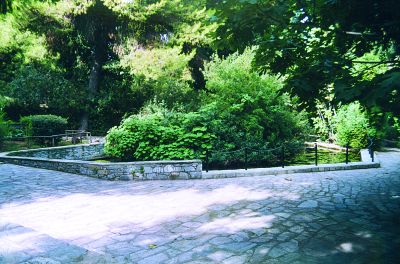
Section of Historic Plants
This section of the Garden is located to the left of the main gate. This section is unique and it hosts plant species that have been reported by Theophrastus, Dioscorides and other ancient Greek authors or in the Holy Bible and in ancient Greek Mythology.
Here the visitor has the opportunity to see many attractive plants and learn about the particular history of each one of them. For instance, Mandragora autumnalis (mandrake) is a small plant, with a man-shaped root that was closely associated with witches and magic rituals during the middle- ages. It is also known as one of the most significant medicinal plants of classical times since Hippocrates used the juice of the plant for anaesthesia during patient operations. Another well-known plant is Conium maculatum (hemlock) used by the political enemies of the famous ancient Greek philosopher Socrates for his execution.
The branches of Olea europaea subsp. oleaster (wild olive tree) were used by the Ancient Greeks for the coronation of the winners of the Olympic Games and Olea europaea subsp. europaea (olive tree) was the holy tree of the ancient city of Athens. The stem of Ferula communis s.l. (giant fennel) was believed to have been used by Prometheus when he stole the fire from the gods on mountain Olympus and brought it to the humans.
It is also interesting to learn that the leaves of Acanthus sp. (bear’s breech) inspired the ancient Corinthian architect Callimachus to design the capitals of the Corinthian-rhythm columns. Myrtus communis s.l. (myrtle), an aromatic plant dedicated to the ancient goddess Aphrodite, Laurus nobilis (laurel) the beloved plant of Apollo, Lilium candidum (lily) the plant with the white flowers dedicated to the Holy Mother and numerous other species carrying history or tradition along with their presence in Greece, are hosted in the Historic section.